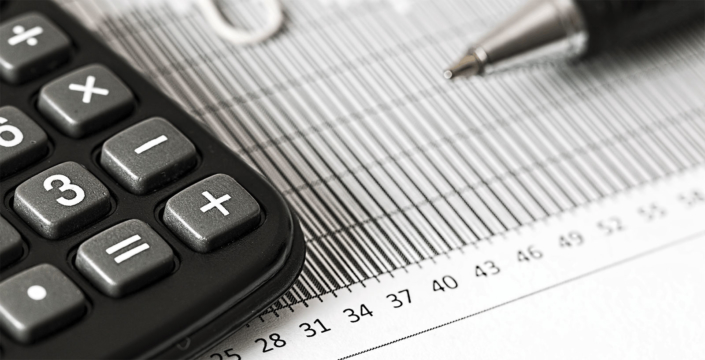Blog | All Posts | All Topics
How Does Accounts Receivable Work?
Accounts receivable refers to the money due to you from customers or clients. On your balance sheet, your accounts receivable (AR) go in the credit column. You will only have an accounts receivable process if you extend credit to your customers. For instance, professional services businesses often have accounts receivables because they don’t collect final payment until after their services have been completed.
Businesses that use accounts receivable include architecture and engineering firms, building contractors, technical and trade schools, trucking businesses, and consulting firms. Many small businesses also extend credit to clients when they’re getting started.
Staying on top of AR is an important part of any bookkeeping practice. Learn more about accounts receivable and how it can keep your cash flow going.
What is Accounts Receivable?
The funds in your accounts receivable line item refers to outstanding debt that is owed to you. Many businesses offer customers a net-30 or net-60 billing cycle. This means that once you submit your invoice to a customer, they have either 30 or 60 days to pay it. In the intervening time, the funds are considered accounts receivable.
Is accounts receivable an asset or liability?
Since accounts receivable represents future incoming cash, it is considered an asset. That being said, if you are unable to collect the money due to you, accounts receivable could also turn into a bad debt.
The accounts receivable project
How does accounts receivable work? Let’s talk about what you need to do to establish a process that works for your organisation. The key is to balance your need for cash flow with an appropriate level of flexibility for clients.
Establish Credit Practices
Before you can start offering credit to your clientele, you need to establish a set of rules. This ensures that you’ll be paid on time and can collect penalties if someone pays late.
Your business should decide:
- How much credit are you willing to extend to clients? Maybe you expect 50% payment up front and extend 50% credit for 30 days after the project is complete. Perhaps you set a dollar amount maximum. Identify the amount of credit you’re comfortable extending and put it in writing.
- Is every client credit worthy? Determine if you have parameters for who is able to take advantage of net billing.
- How long will people have to pay? Most organisations extend credit for no more than 60 days. This allows you to keep cash flow coming in while offering clients the appeal of flexibility.
- What will late payment penalties be? You need to outline terms and conditions for your billing cycle. This includes fees for paying late. You may also want to consider a discount for paying early to encourage prompt payoff.
Invoice Your Customers
Once you have established credit practices and extended an offer to clients, you should have an invoicing process in place. Send your customers or clients an invoice as soon as your work is complete. This starts the clock ticking on their payment time period. Invoicing late will delay your incoming payment.
Track your Accounts Receivable
You need to stay on top of your accounts receivable funds. Many businesses choose to appoint an accounts receivable officer, especially as they grow. Smaller businesses may be able to get by with a simple spreadsheet. More advanced tracking software is available for large businesses with more complicated accounting needs.
For every credit extended, your accounts receivable team should be tracking:
- The amount due
- The date the client was invoiced
- The invoice due date
- The dates the client was contacted for overdue payments
- Any applicable late fees
- Escalation efforts made to collect payment
Accounts Receivable Accounting
Accounts receivable are typically tracked as a part of your balance sheet — a document that lists your businesses’s assets, liabilities, and equity at any point in time. Once a client pays their invoice, the money may move from the accounts receivables line item to your bank account balance. It remains a credit, since it always represents money coming in, never money going out.
The difference between accounts receivable and accounts payable
While accounts receivable reporting represents money that is due to you in the immediate future, accounts payable is just the opposite. Accounts payable are debts that you owe to someone else in the short term. For example: When you have a maintenance worker come and fix a leaky pipe, they probably leave an invoice. You would add the debt to your accounts payable tracking and make payment within the requested time period.
Accounts receivable includes sales, services rendered, and other client projects. Meanwhile, accounts payable can be more complicated. It includes everything from utilities and rent payments to vendor invoices and manufacturer bills. Some businesses also include payroll in their accounts payable bucket.
How do you record accounts receivable?
How does accounts receivable work when it comes to credit and debit reporting? Balance sheets require itemisation. Depending on the size of your business, there probably won’t be room for each individual AR credit on your balance sheet. Instead, you’ll include the total current amount due from clients in the credits column.
In another location, be it a spreadsheet or accounting software, you will want to itemise each debt. Granular tracking allows you to better follow-up on late debts.
What happens if a client doesn’t pay?
Unfortunately, there are bound to be clients who don’t pay on time. Late fees are legal in Australia, but they do have to be considered reasonable. For instance, charging a $10 late fee is unlikely to raise any eyebrows. If you charge $500 for a payment that is one day late, the client may say it is unfair and unreasonable. When late charges are excessive, your clients can legally refuse to pay them.
The best course of action for late payments is to send a reminder on the first day the payment is late and inform your client about late fees. If the debt remains unpaid, follow up with a letter of demand. Finally, you can take your client to court if the debt is large enough. If you’re unable to collect, you can consider the AR item a “bad debt” and may be able to deduct it on your taxes.
Help with accounts receivable
Need help tracking your incoming payments? Visory can provide a virtual bookkeeping team to manage your client invoices. Follow-up email anxiety will be no more, and you can keep your cash flow flowing. Learn more about Visory’s accounts receivable services.







